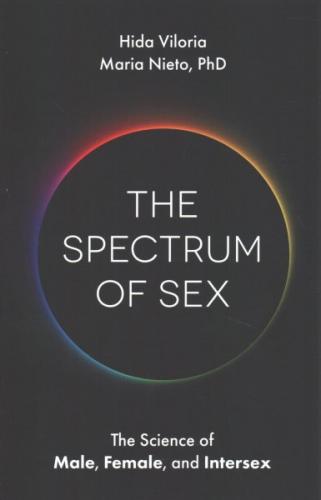 THE SPECTRUM OF SEX
THE SPECTRUM OF SEX
The Science of Male, Female, and Intersex
by Hida Viloria and Maria Nieto
Jessica Kingsley Publishers.
156 pages, $18.95
WHAT WAS KNOWN in the West since antiquity as “hermaphroditism” has been a biological challenge wrapped in mythology, curiosity, and speculation. It came to popular attention when it became politically charged in the 1990s under the label “intersex.” Patient advocates and gender studies academics have debated the theoretical and clinical lessons to be drawn from the condition and even how to name it. In just the last two decades, the umbrella term has shifted from: hermaphrodite and “pseudohermaphrodite,” to intersex, to DSD (variously spelled out as “disorders of sex development,” “disorders of sex differentiation,” and “differences of sex development”), and VSC (“variations of sex characteristics”). There is tremendous political significance in a name, just as there has been regarding terms for sexual orientation: sexual inverts, psychosexual hermaphrodites, homophiles, homosexuals, gay men and lesbians, queer people, and so on.
For millennia, the issue of hermaphroditism arose at the very rare birth of a human or farm animal with atypical or “ambiguous” genitalia. Even more rare was the seemingly miraculous emergence of penis and testicles in women (noted in the 16th century by French royal surgeon Ambroise Paré). Over the 20th century, the chromosomal, genetic, and endocrinological causes of some of the most common intersex conditions were identified, such as Congenital Adrenal Hyperplasia (CAH), Androgen Insensitivity Syndrome, Klinefelter Syndrome, and Turner Syndrome.
By the mid-20th century, simultaneous advances in surgery and the isolation of steroid hormones (including estrogen and testosterone) allowed for the possibility of transgender “sex change”: the surgical and hormonal treatment of adults who wished to transition from their natal sex to their psychological gender. These medical advances also facilitated the treatment of infants born with ambiguous genitalia: particularly severe cases of CAH, hypospadias, or other major birth defects. In past centuries, many of these infants probably would have died.
By the 1960s, the standard practice became more self-confident and aggressive: a medical team decided the probable gender of a newborn with ambiguous genitalia and recommended surgery to the parents. In those more paternalistic times, medical articles even recommended not explaining the diagnosis to parents and simply reassuring them that surgery would fix their infant.
Vernon Rosario, MD, PhD, is a historian of science and associate clinical professor of psychiatry at UCLA. He works as a child psychiatrist with the L.A. County Dept. of Mental Health.







